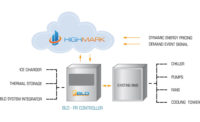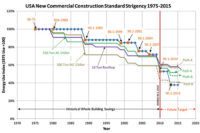Over time, HVAC systems can become inefficient. Energy logging at the biggest loads can help identify wasted energy and potential savings.
Most HVAC professionals understand that energy is wasted by inefficient systems or by operating non-critical loads at peak utility rate periods. The questions aren’t whether, but how much energy is going to waste, and where, and at what cost.
Whether you’re a contractor submitting bids to building operators, or the building operator, power and energy logging can help you answer these questions about energy efficiency and how return on investment (ROI) is affected.
In the past, getting an accurate picture of energy use was complex and costly. You could use a low-end general-purpose logger but you wouldn’t get accurate results. Or you could use an expensive power quality analyzer that required an engineer with advanced training. The Fluke 1730/Basic Three-Phase Energy Logger is designed to provide a new solution. It’s optimized for energy logging in commercial/institutional buildings and industrial plants.
Three Reasons to Log Power and Energy Use

|
| Energy logging helps identify waste. |
1. Manage energy costs and realize savings opportunities.
While energy expenditures are a significant portion of overall operational cost, many companies don’t really know where their energy dollars are being spent, since all they get is one overall monthly bill, with no indication of whether that use was standard or excessive compared to operations that month.
By logging power use at the main service entrance and then at large loads and secondary supplies, facilities can see how much power is being used when, by what, and at what hourly cost. Without fail, the data will turn up several energy wastes that can be rectified by operational changes alone, such as turning off certain loads, reducing loads during peak rate periods, or adjusting the schedule so that loads operate during non-peak rate periods.
2. Rebates and financial incentives.
Utility companies offer incentives and rebates as a way to encourage their customers to decrease energy use. The goal is to serve more customers with the same existing power supply, since building new power generation plants is prohibitive. Many incentives and rebates are available for retrofitting existing buildings, for example with high-efficiency motors, as well as by replacing motor starters with variable frequency drives.
To receive the financial incentive, the utility company will often require verification of the energy use — an ideal scenario for a load study. A pre-retrofit load study will document the existing energy use to provide baseline data, while a post-retrofit load study verifies the energy savings achieved upon completion of the modifications.
3. Accuracy of electrical bill.
Owners of large and medium-sized facilities often install electrical submetering to bill tenants for their specific electricity usage. However, these submeters are commonly installed improperly, putting that billing into question. Installation issues vary, and include current transducers installed backward, current transducers on the wrong phase, and errors in configuring the submeter.
A good business practice is to double-check the reading with a portable energy logger. Logger data provides a rough order of magnitude comparison of what is being billed versus what is actually used. A significant deviation between the amount charged for electricity usage and the logger data would signal the need to investigate the submeter setup.
Simpler Energy Logging
According to Fluke, the 1730 energy logger not only provides professional-level data measuring, it provides those capabilities in an easy-to-use, portable tool that:
• Is easy to set up. The company researched the actions that trigger user errors and applied what it learned to supply completely re-engineered connectors, digital check, and auto correct of all connections.
• Fits inside most electrical cabinets. The tool can draw power directly from the circuit under test, allowing the panel doors to be closed. The power supply is detachable to allow the unit to fit in tighter spaces.
• Carries the highest safety rating. The 1730 is 600 V CAT IV/1000 V CAT III rated for use at the service entrance and downstream.
• Is easy to use, even with gloves. The custom touch screen and large buttons are easy to manipulate with heavy gloves on. And the specialized screen technology is reactive to touch yet safe for live-energy work. The logical user interface presents choices, steps, and values in the order needed, to make the unit easy to use even if you don’t use it often.
• Lets you see data in real time. Rather than have to wait until you download the logged data to review it, you can view data on the 1730 display during logging. You can also download logged data to a USB stick in the field and leave the logger to continue its job. It can store more than 20 separate logging sessions.
• Connects with temperature and pressure accessories for multi-stream logging.
The 1730 can be used to discover hidden energy waste in air conditioning systems and other large loads and help reduce energy bills.
Publication date: 12/8/2014
Want more HVAC industry news and information? Join The NEWS on Facebook, Twitter, and LinkedIn today!










